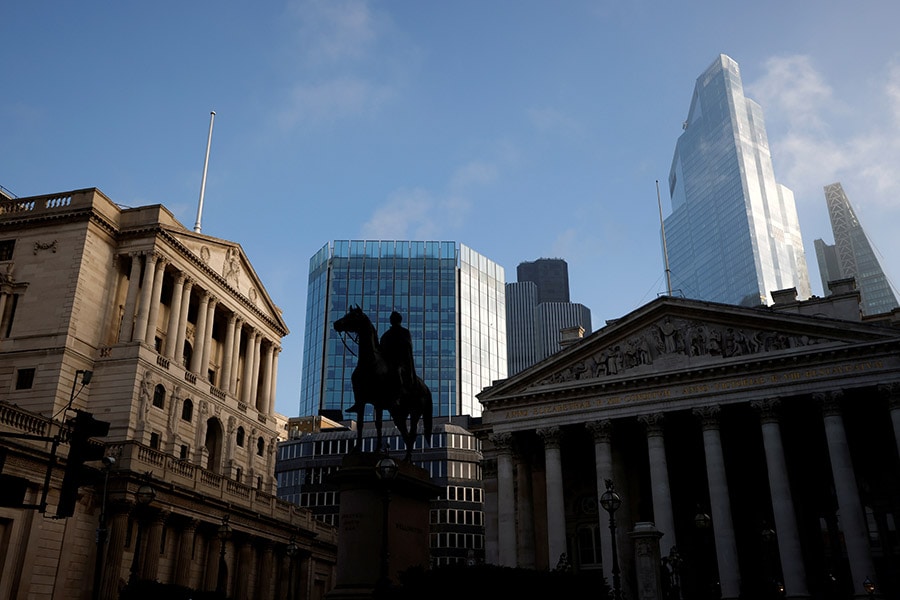Known as Libor, the interest rate bench mark once underpinned more than $300 trillion in financial contracts but was undone after a yearslong market-rigging scandal came to light in 2008. It turned out that bankers had been coordinating with one another to manipulate the rate by skewing the number higher or lower for their banks’ gain.
Libor could no longer be used to calculate new deals as of Dec. 31 — more than six years after a former UBS trader was jailed for his efforts to manipulate it and others were fired, charged or acquitted. Global banks including Barclays, UBS and Royal Bank of Scotland ultimately paid more than $9 billion in fines for fixing the rate for their own profit.
Randal Quarles, then the Federal Reserve’s vice chair for supervision, offered a scathing early eulogy in October, saying that Libor “was not what it purported to be."
“It claimed to be a measure of the cost of bank funding in the London money markets, but over time it became more of an arbitrary and sometimes self-interested announcement of what banks simply wished to charge," Quarles said.
Libor was born in 1969 to Minos Zombanakis, a Greek banker. The shah of Iran, Mohammad Reza Pahlavi, wanted an $80 million loan, and Zombanakis was willing to provide it. But the question of the interest rate to charge a sovereign ruler was a tricky one. So he looked to the rate that other well-heeled borrowers — London’s banks — would pay to borrow from one another.
In its early years, Libor was a growing but still adolescent rate, employed for a steadily increasing number of contracts. In 1986, at age 17, it hit the big time: Libor was taken in by the British Bankers Association, a trade group described later by The New York Times as a “club of gentlemen bankers."
They effectively made it the basis for virtually all the business they conducted. Libor was the interest rate that banks themselves had to pay, so it offered a convenient base line for the rates they charged customers who wanted to borrow cash to buy a home or issue a security to finance a business expansion.
Libor became a number punched into almost any calculation involving financial products, from the humble to the exotic. British banks used it to set rates for loans across the industry, whether denominated in dollars, British pounds, euros or Japanese yen. Never before had there been such a bench mark, and Libor’s daily movements were the very heartbeat of international finance.
But as Libor approached middle age, troubling health problems began to emerge.
By 2008, regulators in the United States and Britain began receiving information that banks’ rate reports were amiss. Because Libor relied on self-reported estimates, it was possible for a bank to submit a rate that was artificially high or low, thus making certain financial holdings more profitable.
Global regulators called for Libor’s end, saying that it was potentially inaccurate and vulnerable to manipulation. Andrew Bailey, then the CEO of a major British banking regulator, the Financial Conduct Authority, sounded the death knell in 2017, when he said it was time to “begin in earnest on planning the transition to alternative reference rates."
The banking industry — which for decades built trading systems around Libor — held on to it, despite the grim prognosis. Many bankers dragged their feet in making the necessary changes because Libor was so widely used in the financial system, prompting exasperated speeches from the officials charged with taking the rate fully out of commission.
“The deniers and the laggards are engaging in magical thinking," Quarles said in June. “Libor is over."
Not exactly, though. Libor was still viable until the end of the year, and some bankers continued to use it to make leveraged loan deals into its final hours. Those and other existing contracts mean that Libor will exist in something of a zombie state until they, too, come to an end.
Quarles, perhaps reluctant to speak ill of the dead, said Tuesday that Libor"s problems hadn’t necessarily been insurmountable.
“You whack the people that did the manipulation, and say, ‘Don’t do that again,’ and then you move on," he said. “You don’t need to rebuild the interstate highway if people are speeding."
Even so, he said, Libor"s time had passed, “and fortunately the market has moved on."
It is survived by several successors, each making a claim to its crown.
The Secured Overnight Financing Rate — a rate produced by the Federal Reserve Bank of New York that is based on transaction data, not estimates — has already been embraced by many U.S. banks and has the endorsement of the Fed. Others, like the American Interbank Offered Rate and the Bloomberg Short-Term Bank Yield Index, have their adherents. In Britain, the Sterling Overnight Index Average seeks to inherit Libor’s place as the do-it-all bench mark.
J. Christopher Giancarlo, a board member of the American Financial Exchange, which calculates the American Interbank Offered Rate, said Libor was once a “giant." It was, he said, the foundation of a system that gave every player in the financial hierarchy a way to take a cut.
“The problem with Mr. Libor is, for a time, he had it all," said Giancarlo, a former chair of the U.S. Commodity Futures Trading Commission. Libor was once “on top of the world," he said, but became a “disreputable, tottering old geezer at the end."

 Libor became a number punched into almost any calculation involving financial products, from the humble to the exotic
Libor became a number punched into almost any calculation involving financial products, from the humble to the exotic